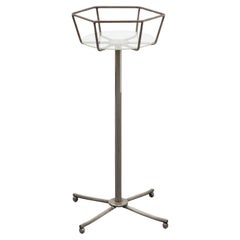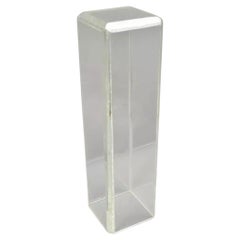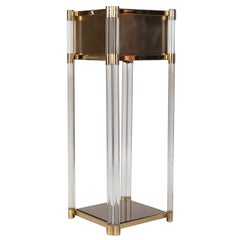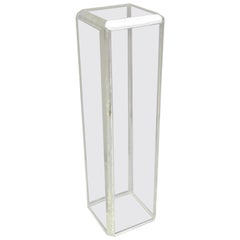Lucite Plant Stand
20th Century Planters and Jardinieres
Steel
Late 20th Century Unknown Mid-Century Modern Pedestals
Lucite
Recent Sales
Vintage 1970s Unknown Mid-Century Modern Tables
Brass
Vintage 1970s North American Mid-Century Modern Pedestals and Columns
Lucite
Vintage 1970s American Pedestals
Lucite
Vintage 1970s American Pedestals and Columns
Vintage 1970s American Mid-Century Modern Pedestals and Columns
Lucite
Mid-20th Century Mid-Century Modern End Tables
Resin, Lucite
Vintage 1970s Italian Mid-Century Modern Pedestals
Acrylic, Lucite
Vintage 1970s American Side Tables
Chrome
Materials: Plastic Furniture
Arguably the world’s most ubiquitous man-made material, plastic has impacted nearly every industry. In contemporary spaces, new and vintage plastic furniture is quite popular and its use pairs well with a range of design styles.
From the Italian lighting artisans at Fontana Arte to venturesome Scandinavian modernists such as Verner Panton, who created groundbreaking interiors as much as he did seating — see his revolutionary Panton chair — to contemporary multidisciplinary artists like Faye Toogood, furniture designers have been pushing the boundaries of plastic forever.
When The Graduate's Mr. McGuire proclaimed, “There’s a great future in plastics,” it was more than a laugh line. The iconic quote is an allusion both to society’s reliance on and its love affair with plastic. Before the material became an integral part of our lives — used in everything from clothing to storage to beauty and beyond — people relied on earthly elements for manufacturing, a process as time-consuming as it was costly.
Soon after American inventor John Wesley Hyatt created celluloid, which could mimic luxury products like tortoiseshell and ivory, production hit fever pitch, and the floodgates opened for others to explore plastic’s full potential. The material altered the history of design — mid-century modern legends Charles and Ray Eames, Joe Colombo and Eero Saarinen regularly experimented with plastics in the development of tables and chairs, and today plastic furnishings and decorative objects are seen as often indoors as they are outside.
Find vintage plastic lounge chairs, outdoor furniture, lighting and more on 1stDibs.
- Are plant stands necessary?1 Answer1stDibs ExpertMay 5, 2023No, plant stands aren’t always necessary. You can place a planter on a windowsill, shelf or another surface, provided the location gets enough light. However, plant stands can be useful when you don’t have a surface near a window. Some people also use them simply because they like how they look. On 1stDibs, find a collection of plant stands.
- 1stDibs ExpertFebruary 13, 2023There are many things you can do with old plant stands. You can use them to display houseplants and artificial arrangements, to showcase sculptures and decorative accents, to hold lamps and more. On 1stDibs, find a selection of plant stands.
- 1stDibs ExpertApril 5, 2022There is no widely-used term for Victorian plant stands. Plant stands were popular during the reign of Queen Victoria, and many antique examples still exist today. On 1stDibs, shop a variety of Victorian plant stands from some of the world’s top sellers.



